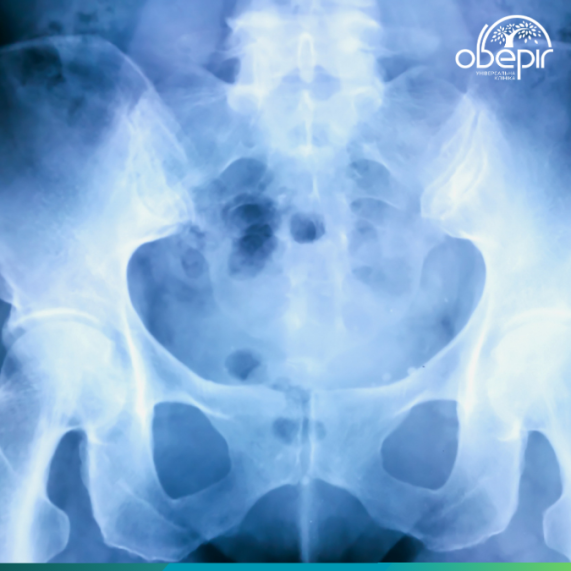Osteoporosis: causes, diagnosis, prevention
28 July 2025


28 July 2025


Osteoporosis is a systemic skeletal disease characterized by a decrease in bone mass and disruption of the microarchitecture of bone tissue, leading to increased bone fragility and, as a result, an increased risk of fractures. It is often called a "silent killer" because it can develop asymptomatically for many years until the first fracture occurs.
The diagnosis of osteoporosis is based on several methods:
Densitometry (Dual-energy X-ray absorptiometry - DXA/DPA): This is the "gold standard" for diagnosing osteoporosis. The method allows measuring bone mineral density (BMD) in various parts of the skeleton (most often in the femoral bone and lumbar spine) and assessing the risk of fractures. The results are compared with normative indicators for young adults (T-score) and for people of the same age (Z-score).
X-ray: Allows for the detection of fractures, but is less effective for diagnosing osteoporosis itself, as significant changes in bone density become noticeable only when more than 30% of bone mass has been lost.
Laboratory tests: Help identify secondary causes of osteoporosis and assess bone metabolism. These include:
Calcium and phosphorus levels in blood and urine
Vitamin D levels
Parathyroid hormone (PTH) levels
Markers of bone remodeling (e.g., alkaline phosphatase, osteocalcin, P1NP, CTx).
Fracture Risk Assessment (FRAX): This is a tool developed by WHO that allows assessing the 10-year risk of major osteoporotic fractures and hip fractures, taking into account clinical risk factors and BMD.
Risk factors are divided into non-modifiable (which cannot be influenced) and modifiable (which can be influenced).
Non-modifiable risk factors:
Age: The risk increases with age, especially after 50.
Gender: Women are more often affected by osteoporosis, especially after menopause due to a decrease in estrogen levels.
Family history: A history of osteoporosis or fractures in parents increases the risk.
Ethnicity: Higher risk in people of Caucasian and Asian descent.
Thin build/low body weight: BMI less than 18.5 kg/m².
Early menopause (before 45 years) or surgical removal of the ovaries.
Modifiable risk factors:
Insufficient intake of calcium and/or vitamin D: Important for bone formation and maintenance.
Sedentary lifestyle: Physical activity stimulates bone formation.
Smoking: Negatively affects bone tissue and reduces blood supply.
Alcohol abuse: Can lead to impaired absorption of calcium and vitamin D.
Certain diseases:
Endocrine: hyperthyroidism, hyperparathyroidism, diabetes mellitus, Cushing's disease.
Gastrointestinal: celiac disease, Crohn's disease, ulcerative colitis (impaired absorption).
Rheumatic: rheumatoid arthritis, systemic lupus erythematosus.
Kidney and liver diseases.
Taking certain medications:
Glucocorticoids (long-term use).
Some anticonvulsant drugs.
Heparin.
Some cancer treatment drugs (e.g., aromatase inhibitors).
The treatment of osteoporosis is complex and aims to:
Reduce the risk of fractures.
Increase bone mass.
Relieve pain (if there are fractures).
Improve quality of life.
Main areas of treatment:
Non-pharmacological treatment:
Diet: A balanced diet with sufficient calcium and vitamin D.
Physical exercises: Adapted to the patient's condition, aimed at strengthening muscles and improving coordination.
Fall prevention.
Quitting bad habits.
Pharmacological treatment: Prescribed by a doctor based on densitometry results, fracture risk assessment, and the patient's general condition.
Drugs that reduce bone resorption (antiresorptives):
Bisphosphonates: The most common drugs for treating osteoporosis (alendronate, risedronate, ibandronate, zoledronic acid). They reduce bone destruction by slowing down the activity of osteoclasts. They can be taken daily, weekly, monthly, or intravenously once a year.
Denosumab: A monoclonal antibody that blocks RANKL, preventing the formation and activation of osteoclasts. Administered subcutaneously every 6 months.
Selective estrogen receptor modulators (SERMs): For example, raloxifene. They have an estrogen-like effect on bones but do not affect the breasts and uterus.
Hormone replacement therapy (HRT): Can be used for postmenopausal women, but has limitations and risks.
Drugs that stimulate bone formation (anabolic drugs):
Teriparatide: Recombinant parathyroid hormone. Stimulates the formation of new bone tissue. Administered daily subcutaneously for a limited period (usually up to 2 years).
Romosozumab: A new drug that simultaneously stimulates bone formation and reduces resorption. Administered subcutaneously once a month.
Combined action drugs:
Strontium ranelate: Has a dual mechanism of action that simultaneously stimulates bone formation and reduces bone resorption.
The choice of drug and the duration of treatment depend on the individual characteristics of the patient, the severity of osteoporosis, the presence of concomitant diseases, and the risk of fractures. Treatment for osteoporosis is usually long-term and requires regular medical supervision.
To make an appointment for an examination, call 044 521 30 03
